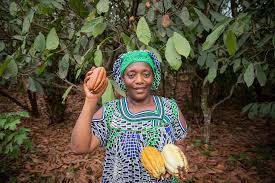
A recent study has shown that climate change is expected to have a major effect on cocoa production in West and Central Africa, which provides more than 70% of the world’s cocoa. The research, carried out in Ivory Coast, Ghana, Nigeria, and Cameroon, forecasts that by 2050, almost 50% of the areas currently suitable for cocoa cultivation may become unsuitable due to increasing temperatures and changing rainfall patterns. These findings underscore the critical need for adaptive strategies to maintain cocoa production while also protecting forests.
Key Points:
- Conducted in four major cocoa-producing nations—Ivory Coast, Ghana, Nigeria, and Cameroon.
- Ivory Coast and Ghana currently produce over 60% of the world’s cocoa.
- Used the CASEJ mechanistic cocoa crop model to simulate climate change effects on yield.
- Temperature and rainfall variations are reducing suitable cocoa-growing regions.
- Northern Ivory Coast and Ghana expected to experience a 12% decline in yield.
- Nigeria and Cameroon likely to see declines of 10% and 2%, respectively.
- Suitable cocoa regions may move from Ghana and Ivory Coast to Nigeria and Cameroon.
- Cameroon’s forests could face deforestation due to cocoa expansion.
- Effect of increased CO2 on cocoa yield remains uncertain.
- Climate change could influence flowering, fruiting, and pest outbreaks.
- Further research is needed to mitigate adverse effects on cocoa and other crops.
Major Producing Regions
- Global: About 70% of the world’s cocoa beans come from four West African countries: Ivory Coast, Ghana, Nigeria, and Cameroon.
- India: Mainly cultivated in Karnataka, Kerala, and Tamil Nadu as an intercrop with Arecanut and Coconut.





